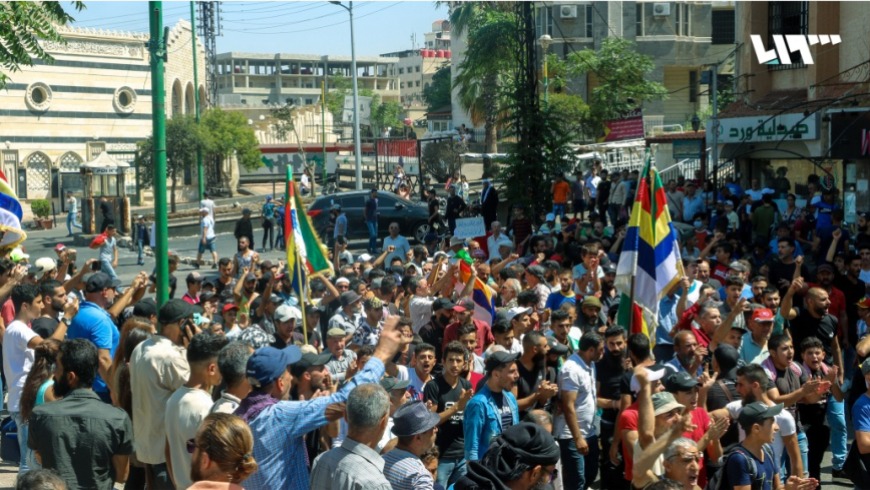Foreign remittances play a crucial role in providing support to Syrians at home as they grapple with the economic and service collapse that has engulfed the country. However, it is important to acknowledge that these remittances also inadvertently contribute to supporting the Syrian regime. They may have even played a role in delaying the onset of popular protests against the regime and easing the suffering of the Syrian people. Nevertheless, recent economic indicators paint a bleak picture, suggesting that the crisis is set to worsen and protests are likely to intensify. This is primarily due to a significant decrease in remittances sent by Syrian refugees and expatriates to their families, coupled with a rise in deflation. All of this is occurring against the backdrop of global inflation and growing concerns about a looming recession in the markets.
Global inflation affects remittances from Syrian refugees
Selim, an employee of a civil society organization in Turkey who wishes to remain anonymous, used to send approximately $100 per month to his family in Syria, consisting of four people. However, maintaining this monthly amount has become challenging due to the rising inflation in Turkey and the increasing costs of living, including housing rents. Selim explains, “This sum used to cover the basic needs of my small family, but after the salary increases in Syria, it’s no longer enough to meet the same needs. Inflation and high prices in Turkey have also affected my financial situation, and today, I’m unable to send the same amount. Unfortunately, I have no choice, as the situation in Syria is much more dire.”
Children Sleep in Streets of Damascus as Authorities Keep Quiet
A similar situation is faced by Raed, a Syrian refugee in Germany who used to work overtime in an unreported capacity in a restaurant in Hamburg. Raed expresses concerns about high gas and electricity bills as well as expensive rents in Germany, necessitating careful savings and expense management. He regrets, “These savings have had a negative impact on my family in Damascus. My unofficial work stopped, and after paying taxes, rent, and bills, my salary is barely enough for me to maintain a modest living in Germany.” Raed explains that he used to send 100 euros a month to his family, but now he sends the same amount every two months.
The Most Receiving Areas for Remittances in Syria:
Data from Syrian money transfer offices in Turkey, as reported by the Syria TV website, indicate that the most common destinations for remittances from Syrian refugees or expatriates are, in order: Damascus, Aleppo, Homs, Hama, and Daraa. The data underscores that remittances to the Syrian coast and Suweida are relatively low compared to these areas.
These figures confirm that remittances have significantly decreased by half this year due to inflation in Turkey and Europe. The director of one office in Istanbul adds that “a large number of Syrians in Turkey either returned to Syria, were deported, or left their jobs due to fears of deportation, choosing to stay at home or return to their home countries. Additionally, immigration to Europe has gained momentum due to inflation and racism.”
The governorate of Suweida in southern Syria has seen a surge in popular protests against economic and political conditions. People are demanding political change in accordance with UN Resolution 2254, viewing it as a means to improve economic and living conditions.
Areas outside the Syrian regime’s control, which have experienced military actions, displacement, and migration, receive the most remittances. Many of these areas have sought refuge in Turkey, European Union countries, and Jordan. In contrast, Syrian refugees in Lebanon, especially those in camps, face poor support and challenging living conditions.
In the Syrian coastal cities, which receive fewer remittances, criticism of the Syrian regime and its government has intensified due to increasing poverty and inadequate services, particularly following a devastating earthquake. Activists are calling for demonstrations similar to those in Suweida.
Money Transfers: A “Fragile” Lifeline for Syrians
Dan Stoenescu, Head of the European Union Delegation to Syria, has emphasized the importance of remittances from Syrian refugeess in Europe to their families inside Syria. He views these remittances as a lifeline for millions of families grappling with the economic and living crisis in their country.
A significant portion of Syrians inside the country relies on assistance from relatives and acquaintances abroad. Typically, small monthly or semi-monthly amounts ranging from $125 to $150 are transferred, benefiting over 5 million people across various regions. This translates to monthly totals estimated between $125 and $150 million, as reported by the Jusoor Center for Studies. However, the question looms: What will happen to Syria if this fragile lifeline is severed or weakened?
This article was translated and edited by The Syrian Observer. The Syrian Observer has not verified the content of this story. Responsibility for the information and views set out in this article lies entirely with the author.


